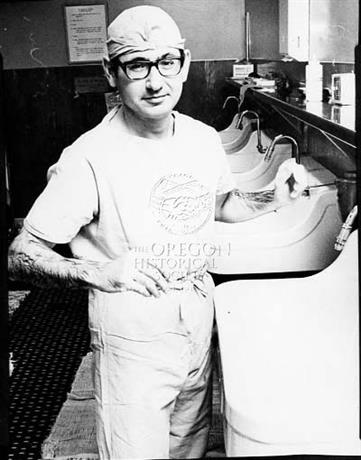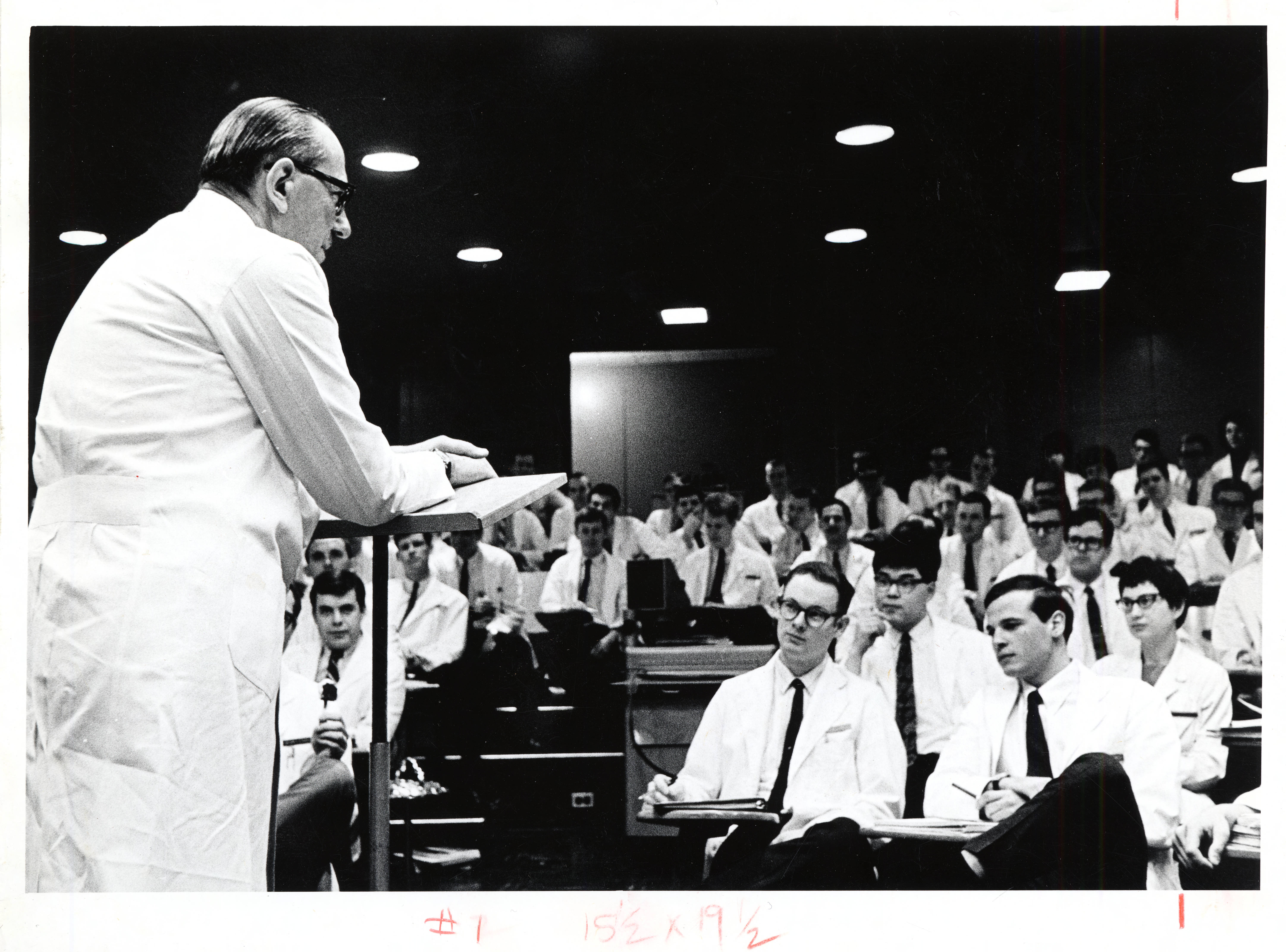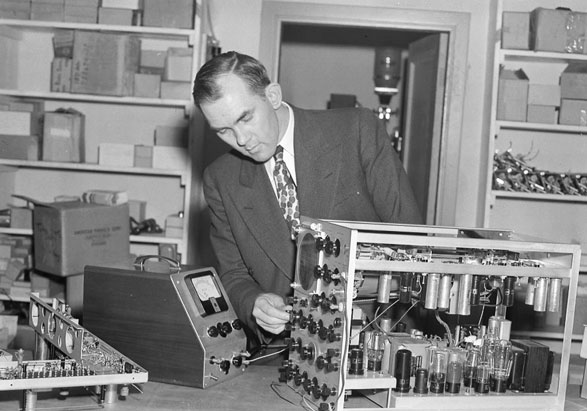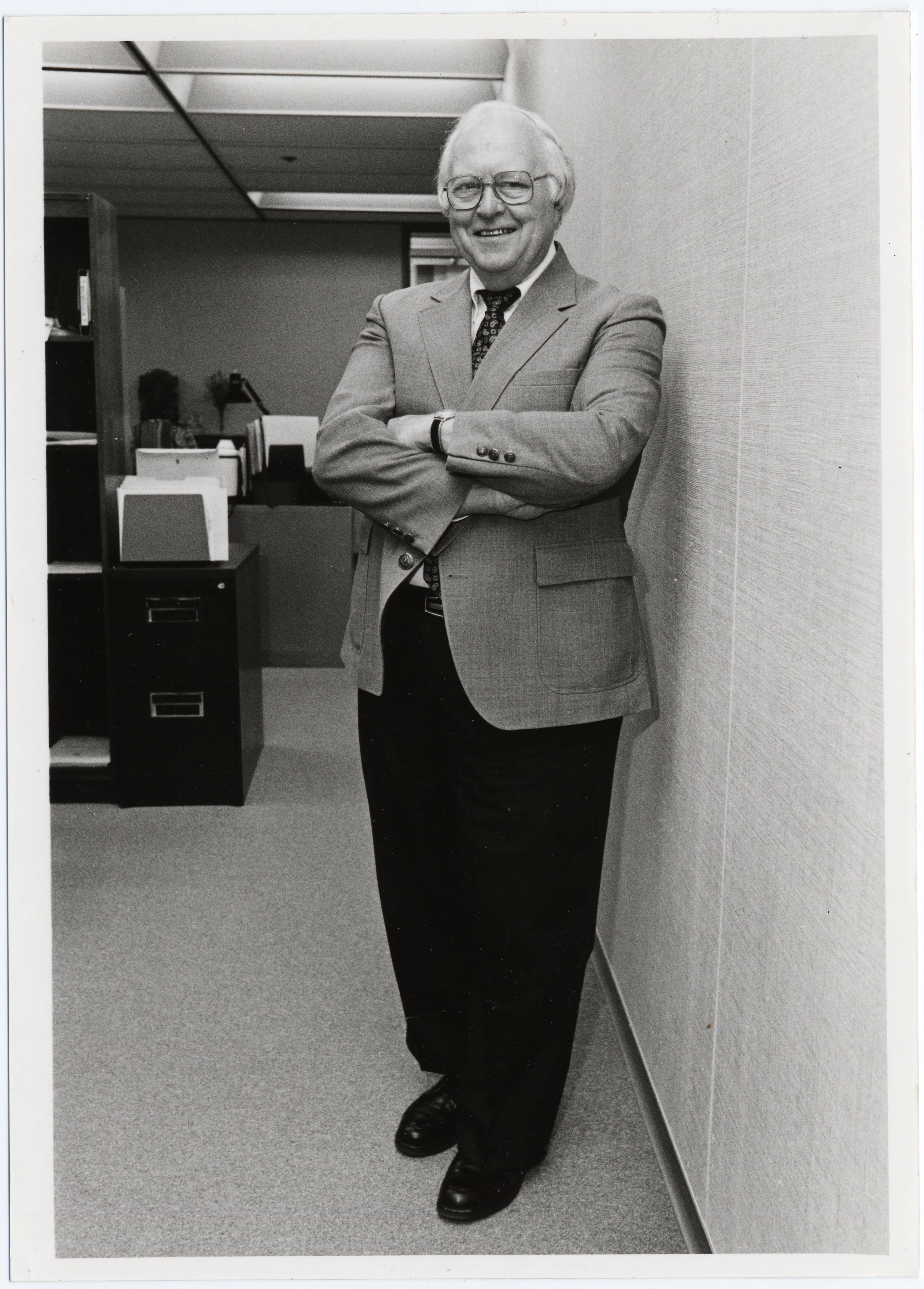Pioneering neuroscientist Robert Stone Dow was Oregon’s first board-certified neurologist. A specialist in the treatment of epilepsy and an expert on the cerebellum, Dow witnessed and participated in many of the advances in the understanding and treatment of neurological disorders during the twentieth century.
Born in 1908 in Wray, Colorado, Dow was raised in Newberg and McMinnville, Oregon. In his senior year at Linfield College, he took a job as a lab assistant for James MacNab at Linfield College. MacNab recommended his promising student to a Linfield trustee, Olof Larsell, at the University of Oregon Medical School, the precursor of Oregon Health and Sciences University. Dow received both his Ph.D. and medical degrees from the university in 1936.
At that time, Dow married Margretta Willetta Leever, a high school music and English teacher in McMinnville. Over the next few years, the couple traveled around the world as Dow pursued a post-graduate education at Yale with John Fulton, in Belgium with Frederic Bremer, at London's Queens Hospital with Gordon Holmes, and at the Rockefeller Institute in Manhattan with Herbert Gasser.
In 1939, the Dows returned to Portland, where Robert worked with Reed College undergraduate Howard Vollum (who later co-founded Tektronix) to build the first electroencephalogram (EEG) testing device in Oregon. During World War II, Dow used the EEG to help triage workers who suffered head injuries while working in the Kaiser shipyards. After the war, he established a clinical neurology practice with neurosurgeon John Raaf.
In the early 1950s, Olof Larsell began to publish the results of his studies in comparative anatomy of the cerebellum in a wide range of mammals, reptiles, and birds. He challenged Dow to write a companion textbook on the human cerebellum. In 1953, Dow secured a Fulbright Scholarship that allowed him to live for most of a year in Florence, Italy, to work on a book with neurophysiologist Giuseppe Moruzzi. Together, they published The Physiology and Pathology of the Cerebellum in 1958, which was immediately heralded as a definitive reference. Based on the success of the book, Dow received his first grant from the National Institutes of Health (NIH) in 1959.
Dow used his NIH grant to establish a research team at Good Samaritan Hospital in Portland. The Neurological Sciences Institute lasted for four decades, and at its height had a staff of over fifty scientists. Along with those scientific collaborators and New York neurosurgeon Irving Spencer Cooper, Dow developed a treatment for epilepsy that provided electrical stimulation to the cerebellum. Although Dow’s original idea did not come to fruition, a similar device was approved to treat the disease several years after his death.
In 1965, at the suggestion of Australian Sir John Eccles, a Nobel Prize winner, Dow visited the Fore tribe in New Guinea. Scientists had discovered that many of the Fore suffered from Kuru, a debilitating condition with no known cause whose initial manifestation was a degeneration of the cerebellum. Several years after Dow’s visit, Carleton Gajdusek identified the cause of Kuru as a human spongiform encephalopathy, which spread among the Fore through the ceremonial consumption of the brains of deceased tribal members.
During the last three decades of his life, Dow helped build a series of strong clinical programs at Good Samaritan Hospital, including initiatives in epilepsy, Alzheimer’s disease, migraines, Parkinson’s, brain tumors, and strokes. He continued to publish groundbreaking studies of cerebellum, including articles co-authored with Henrietta and Alan Leiner that explored the concept of motor learning through “cerebellar learning loops.”
Dow died in Portland in 1995.
-
![]()
Robert S. Dow at his desk.
Courtesy Oregon Health & Sciences University Digital Collections
-
![]()
Robert S. Dow at graduation, 1936.
Courtesy Oregon Health & Sciences University Digital Collections
-
![]()
Dr. Robert S. Dow at his desk.
Courtesy Oregon Health & Sciences University Digital Collections
Related Entries
-
![Albert Starr (1926-2024)]()
Albert Starr (1926-2024)
Albert Starr was a boldly innovative surgeon whose precisely choreograp…
-
![Howard P. Lewis (1902-1985)]()
Howard P. Lewis (1902-1985)
Internationally recognized internist Howard Phelps Lewis made major con…
-
![Howard Vollum (1913–1986)]()
Howard Vollum (1913–1986)
Howard Vollum was a founding partner of Tektronix, an innovative electr…
-
Julian S. "Dutch" Reinschmidt (1925-1998)
Julian S. "Dutch" Reinschmidt, physician and educator, was a key figure…
-
![Miles Lowell Edwards (1898-1982)]()
Miles Lowell Edwards (1898-1982)
Miles Lowell Edwards was born in 1898 in Newberg, a town his grandfathe…
Map This on the Oregon History WayFinder
The Oregon History Wayfinder is an interactive map that identifies significant places, people, and events in Oregon history.
Further Reading
Herndon, R.M. "Robert Stone Dow" (obituary). Arch Neurol 53.3 (1996): 277.
Robert Stone Dow Papers. Oregon Health & Science University Historical Collections & Archives, Portland.








